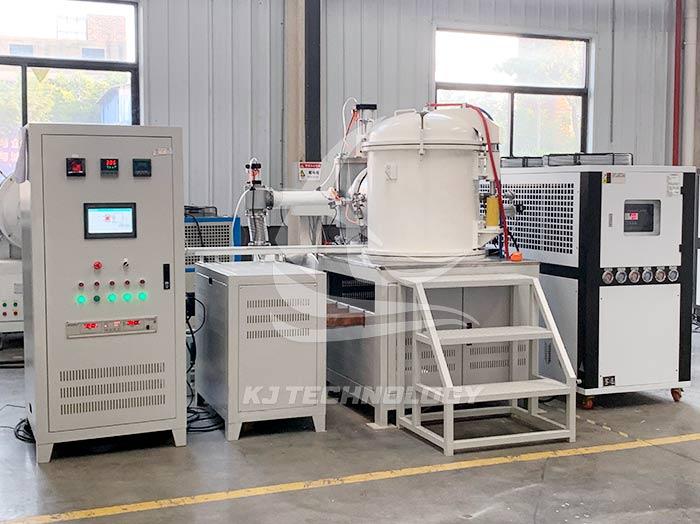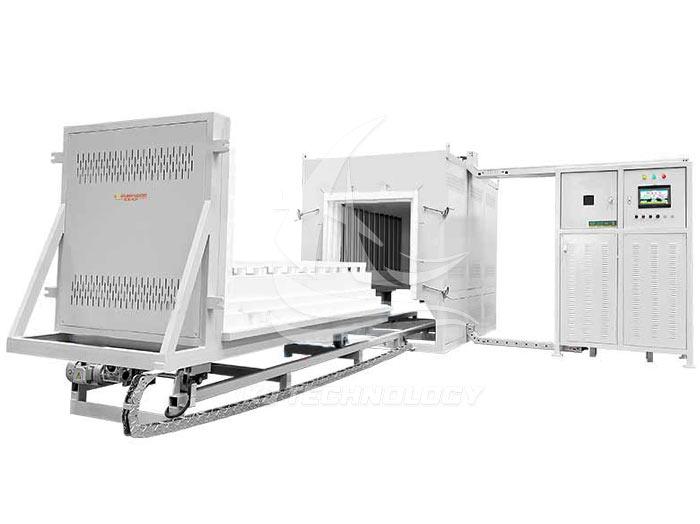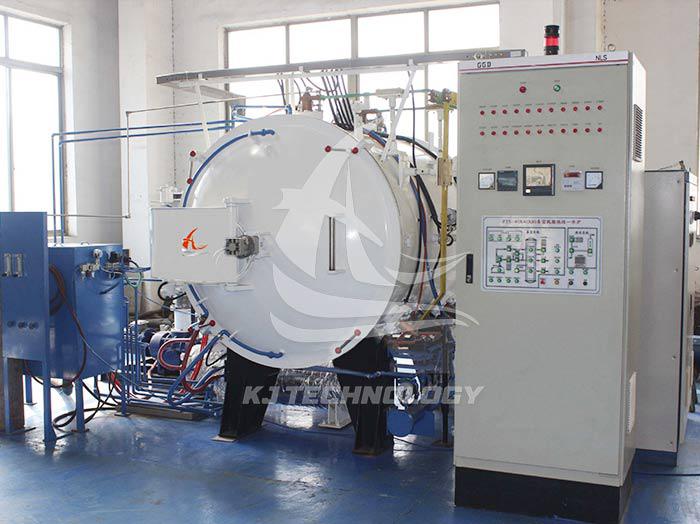Vacuum muffle furnace
 08-04-2025 Author: KJ technology
08-04-2025 Author: KJ technology
The vacuum muffle furnace is a device that combines the advantages of high-temperature heat treatment and vacuum environment. The following is a detailed introduction to it:
1. Core functions and advantages
Vacuum environment control
By using vacuum pumps such as rotary vane pumps and molecular pumps, the pressure inside the furnace is reduced to 10 ⁻ Pa or even higher, effectively isolating oxygen and other gases, avoiding material oxidation or contamination at high temperatures, and ensuring the accuracy of experimental results.
Suitable for heat treatment of oxygen sensitive materials such as non oxide ceramics and metal matrix composites.
High temperature processing capability
The highest temperature can reach 1500-3000 ℃, meeting the requirements of high-temperature processes such as metal melting, ceramic sintering, and material annealing.
Heating elements (such as silicon carbide rods and resistance wires) are evenly distributed to ensure temperature uniformity inside the furnace (temperature difference can be controlled within ± 5 ℃).
Flexibility in atmosphere regulation
In addition to a vacuum environment, inert gases (such as nitrogen, argon), reducing gases (such as hydrogen), or mixed gases can be filled to create a protective or reactive atmosphere.
Suitable for material synthesis in specific atmospheres (such as nitrogen sintering of silicon carbide ceramics), metal surface infiltration treatment (such as carburizing/nitriding), etc.
Precision control system
By using high-precision thermocouples and PID controllers, precise control of heating rate and insulation time can be achieved, supporting multi-stage programmed heating (such as 30 stage programmable control).
Some models are equipped with RS-485 communication interfaces, which can be connected to computers for remote monitoring and recording of experimental data.
Security protection design
Equipped with devices such as over temperature protection, leakage protection, and gas leak detection to ensure safe operation.
The furnace door adopts silicone sealing ring and four corner handwheel rotation locking to prevent air leakage; Some models adopt a raised furnace door design to avoid the risk of high temperature contact.
2. Typical application areas
material science
Study the phase transition, melting, crystallization and other processes of metal alloys, ceramics, glass and other materials at high temperatures.
Example: Sintering silicon nitride ceramics in an inert atmosphere to avoid performance degradation caused by high-temperature oxidation.
Metallurgical Industry
Metal melting, deoxidation, degassing and other processes, as well as the synthesis and preparation of alloys.
Example: Vacuum annealing treatment of precision metal parts (such as bearings, cutting tools) to eliminate internal stress and maintain surface smoothness.
Ceramic production
The firing and sintering of ceramic materials improve product density and mechanical properties.
Example: Preparation of metal based composite materials in a hydrogen nitrogen mixed atmosphere to prevent substrate oxidation.
Semiconductor and Electronics Industry
High temperature doping and oxidation treatment of wafers to ensure surface cleanliness; Sintering of electronic ceramics, such as piezoelectric ceramics and ferrite cores.
Example: Adjusting grain growth direction and optimizing electrical properties through atmosphere control.
Aerospace material testing
Simulate harsh environments (such as vacuum or low-pressure atmosphere) to test the high-temperature stability and thermal shock resistance of materials.
Example: Conduct an atmosphere aging test on high-temperature protective coatings to evaluate their service life.
3. Technical parameters and selection suggestions
key parameter
Temperature range: Select according to material processing requirements (such as metal heat treatment below 1200 ℃, ceramic sintering above 1600 ℃).
Vacuum degree: For ordinary vacuum requirements, a rotary vane pump system (10 ⁻³ Pa) can be selected, while for high vacuum requirements, a molecular pump (10 ⁻⁷ Pa) is required.
Furnace tube size: Select the diameter (such as 50mm~200mm) and length according to the sample size to ensure uniform heating.
Temperature control accuracy: For temperature sensitive experiments (such as semiconductor doping), high-precision models within ± 1 ℃ should be selected.
Selection considerations
Material type: Non oxide ceramics require a high vacuum environment, while metal materials may require an inert or reducing atmosphere.
Process requirements: Sintering, annealing, quenching and other processes have different requirements for temperature uniformity and atmosphere control.
Safety requirements: When dealing with flammable and explosive gases (such as hydrogen), it is necessary to confirm the explosion-proof design of the equipment.
4. Precautions for operation and maintenance
Operating specifications
Ensure that the equipment is placed steadily and away from heating pipes, water pipes, and other facilities to avoid vibration affecting sealing.
Before heating, check the oil level of the vacuum pump and the gas flow meter to ensure the normal operation of the system.
After the experiment, cool down according to the program and fill with inert gas protection to prevent oxidation of the furnace and sample.
Routine maintenance
Regularly clean the residue in the furnace to avoid contamination of heating elements by volatile substances.
Check the oil quality of the vacuum pump and replace it every 3-6 months (mineral oil needs to be replaced more frequently).
Annually check the uniformity of furnace temperature and calibrate thermocouples and PID controllers as necessary.








